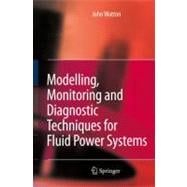
What is included with this book?
| Introduction | |
| Modelling and Computer Simulation as an Aid to Understanding Circuit Behaviour | |
| Condition Monitoring Methods | |
| Common Faults and Breakdowns which Can Occur in a Hydraulic Circuit | |
| Further Reading. | |
| Table of Contents provided by Publisher. All Rights Reserved. |
The New copy of this book will include any supplemental materials advertised. Please check the title of the book to determine if it should include any access cards, study guides, lab manuals, CDs, etc.
The Used, Rental and eBook copies of this book are not guaranteed to include any supplemental materials. Typically, only the book itself is included. This is true even if the title states it includes any access cards, study guides, lab manuals, CDs, etc.